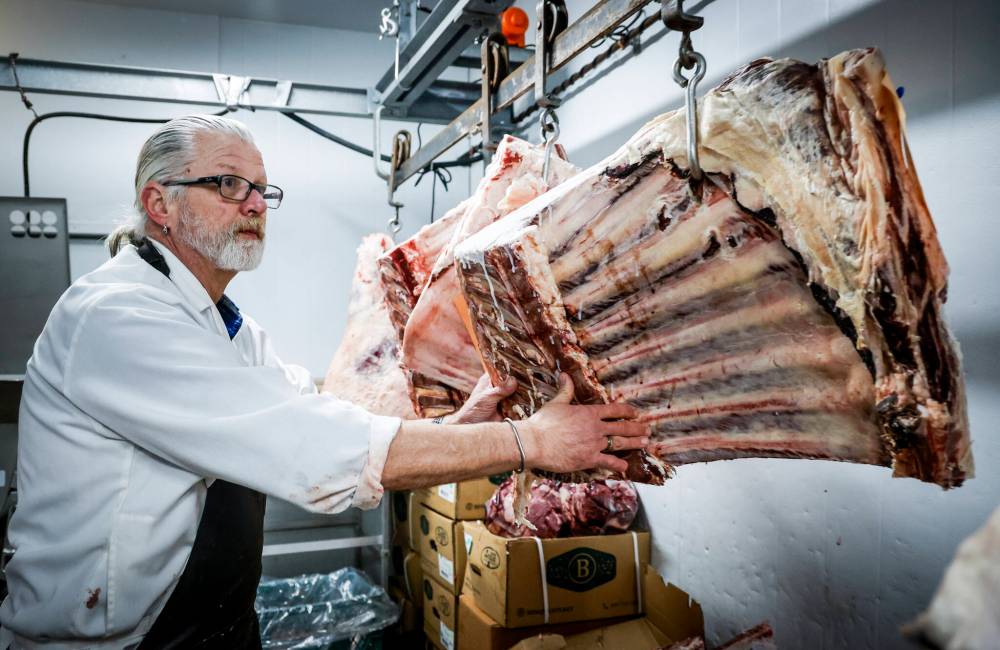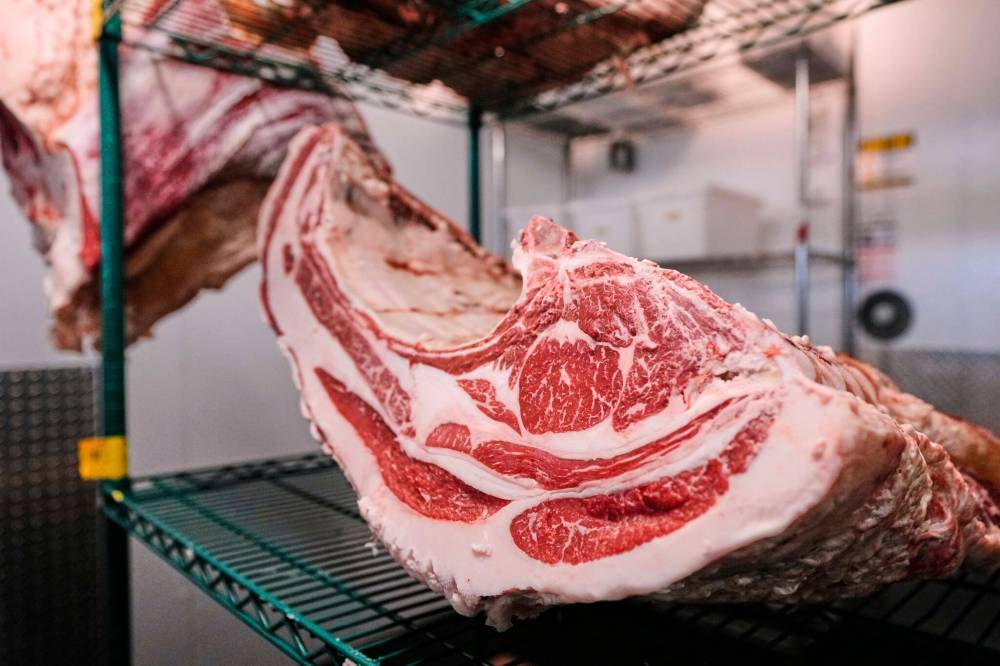Demand for beef has cattle producers riding high, facing questions on future
Advertisement
Read this article for free:
or
Already have an account? Log in here »
To continue reading, please subscribe:
Monthly Digital Subscription
$1 per week for 24 weeks*
- Enjoy unlimited reading on winnipegfreepress.com
- Read the E-Edition, our digital replica newspaper
- Access News Break, our award-winning app
- Play interactive puzzles
*Billed as $4.00 plus GST every four weeks. After 24 weeks, price increases to the regular rate of $19.00 plus GST every four weeks. Offer available to new and qualified returning subscribers only. Cancel any time.
Monthly Digital Subscription
$4.75/week*
- Enjoy unlimited reading on winnipegfreepress.com
- Read the E-Edition, our digital replica newspaper
- Access News Break, our award-winning app
- Play interactive puzzles
*Billed as $19 plus GST every four weeks. Cancel any time.
To continue reading, please subscribe:
Add Free Press access to your Brandon Sun subscription for only an additional
$1 for the first 4 weeks*
*Your next subscription payment will increase by $1.00 and you will be charged $16.99 plus GST for four weeks. After four weeks, your payment will increase to $23.99 plus GST every four weeks.
Read unlimited articles for free today:
or
Already have an account? Log in here »
You know beef prices are high when sticker-shock photos of steaks slide onto social media feeds usually filled with cute pictures of pets and children.
It may be but a blip on the popularity scale, but beef is having a rare moment of glory after decades of being portrayed as an artery-clogging, greenhouse-gas farting, climate change villain.
Eschewing beef was never at the top of my list when it comes to fighting climate change. There are other much bigger culprits to tackle. These days however, there appears to be little appetite — at least among policymakers — for reducing greenhouse gases anyway.

Those plant-based “meats” that were all the rage a short while ago have fallen out of favour, caught up in the growing backlash against ultra-processed foods and the high cost of products that rank in the “meh” category for flavour.
Maybe it’s a longing during uncertain times for familiar comfort foods. Or perhaps it is the influence of U.S. Health Secretary Robert F. Kennedy Jr. advocating cooking french fries in beef tallow as the path to making America healthy again.
Consumers are realizing their weight-loss drugs may cause them to lose as much muscle mass as fat. They’re hungry for nutritionally dense sources of protein in the form of tasty and easily digested meat. Goodbye, pea slurry. Hello, burgers and steak.
For a host of reasons, demand for beef is outstripping supply.
“It seems the U.S. consumer cannot get enough animal protein these days and beef remains king,” says a market research brief by CoBank, the leading agricultural lender in the United States.
“Cattle prices were at historic highs to start 2025, and have only continued higher through mid-year,” CoBank says. It expects that upward price pressure to continue.
U.S. cattle herd numbers are at a 75-year low due to a perfect storm of factors: drought has cut feed supplies, ranchers are retiring and high calf prices incentivize producers to sell rather than hold back stock for breeding.
There are no clear indications yet American ranchers have entered an expansion phase, although a record U.S. corn crop points to ample feed supplies. Likewise, there are no indications consumer demand is shrinking, although CoBank says there is a shift to lower-priced cuts.
This is mostly good news for Canadian cattle producers selling into the highly integrated North American market. For consumers, not so much.
Canadian analysts, however, have been cautioning producers to pay attention to the cyclical nature of the cattle market, warning prices may be nearing their peak. The beef market is highly sensitive to small shifts in consumer confidence and many pundits predict worsening economic conditions.

Jerry Klassen, president of Resilient Capital, told farmers this summer a one per cent change in consumer spending has an equal effect on demand.
While there are signs in Statistics Canada’s July cattle report that Canadian producers may be entering a herd expansion phase by retaining more breeding stock, continued drought and the pressure to cash out are big factors keeping herd numbers down on the northern side of the border as well.
The Canadian government has granted producers in hundreds of western districts an option to defer taxes on income generated from selling off some or all their herd due to feed shortages. Meanwhile, that income windfall is potentially high enough that producers are reportedly talking to their accountants about incorporating their farms before selling cattle this year. (Corporations are taxed at a lower rate than individual operators.)
Producers looking to expand and buying high-priced bred cows now risk a much lower market by the time calves born next spring are ready to sell. Ranchers nearing retirement may choose to sell now rather than risk missing out on these once-in-a-lifetime prices. The high price of farmland also plays into the equation, as pastures and bush are increasingly cleared to make way for more grain farming.
Every rancher’s situation is unique, leaving analysts to wait and see.
In the meantime, consumers would be wise to look past the sticker and focus on value they see in the package.
Laura Rance is executive editor, production content lead for Glacier FarmMedia. She can be reached at lrance@farmmedia.com

Laura Rance is editorial director at Farm Business Communications.
Our newsroom depends on a growing audience of readers to power our journalism. If you are not a paid reader, please consider becoming a subscriber.
Our newsroom depends on its audience of readers to power our journalism. Thank you for your support.

